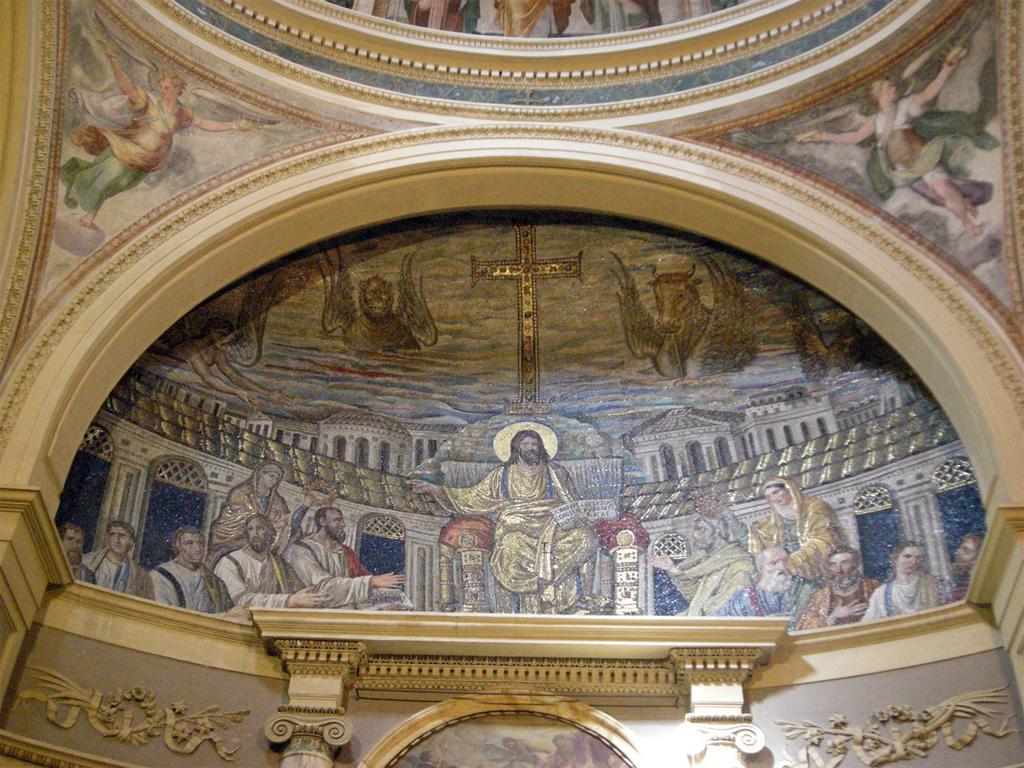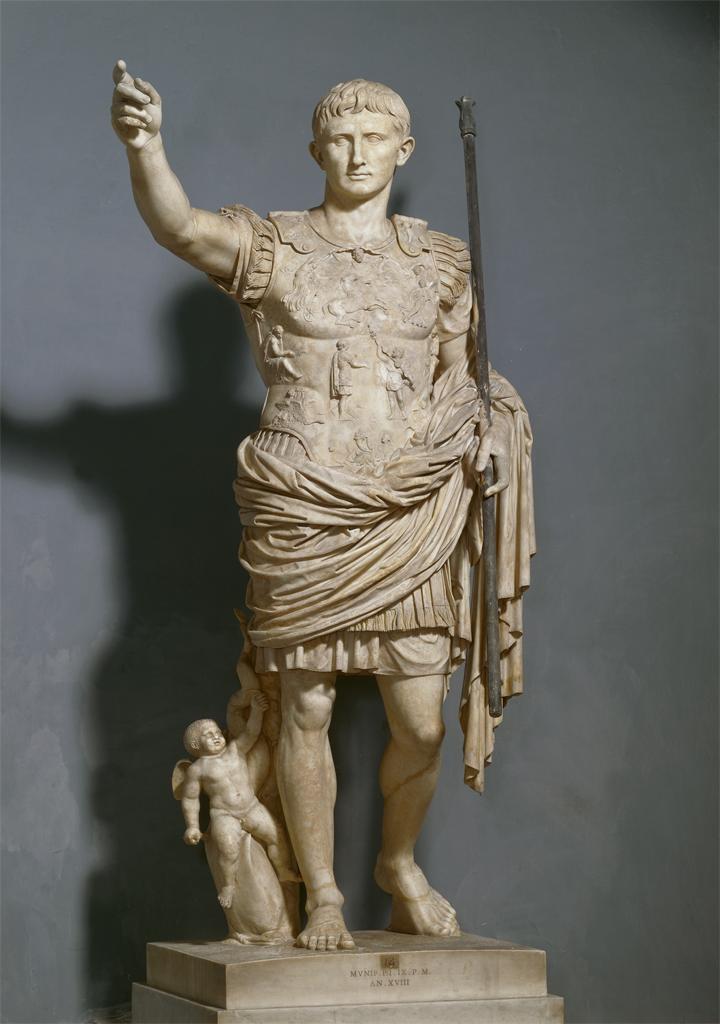The apse mosaic in the Basilica di Santa Pudenziana in Rome on the Esquiline Hill is one of the oldest extant apse mosaics. It dates to the fourth century C.E., sometime after Christianity became legalized in 312 C.E. Although it has been restored, the iconography and composition remain intact and reveal much about the transition from the ancient Roman imperial world to Constantine’s early Christian Rome.
The style of the figures and the representation of pictorial space reveal this relationship, as the Christian imagery relies heavily on established ancient Roman models. Jesus, his Apostles, Mary, and others in assembly are all rendered idealistically, and attention is given to the weight and form of their bodies. This modeling eventually loses favor to the common front-facing, flattened stylization of the early and high middle ages. Furthermore, Jesus and his apostles are rendered in imperial attire. Specifically, Jesus, in his golden toga with purple trim, recalls the propagandistic power of the Roman emperor, and his right extended hand stretches out in the ad locutio gesture also common in imperial images. Finally, directly behind Jesus is a group of buildings demarcating a city, and the jeweled cross in the center defines the city as the Heavenly Jerusalem.
Among other traits, these features illustrate how the early Christian church adopted and reappropriated late antique imagery amidst the change in the empire’s primary religion.
https://smarthistory.org/santa-pudenziana/
Nave View, Santa Pudenziana, Rome, 4th cent.
Apse Mosaic, Santa Pudenziana, Rome, 4th cent.
Augustus of Primaporta, early 1st cent. C.E.
Detail of Jesus, Apse Mosaic, Santa Pudenziana, Rome, 4th cent.
Detail of Apostles, Apse Mosaic, Santa Pudenziana, Rome, 4th cent.






Dear IAS:
There are several problems with this text. It’s imprecise to write that the mosaic was done in “the fourth century C.E., sometime after Christianity became legalized in 312 C.E” when we know it was done ca. 400AD. To write that “the jeweled cross in the center defines the city as the Heavenly Jerusalem” is also a stretch when we know that Emperor Theodosius had such a cross set up on Golgotha. Last but not least, Mary! is not shown in the mosaic, as claimed. I came across this text as it was used and cited in a student paper of mine. Errors on the IASblog, then, go into student papers. That is actually not OK. As a professional society, the IAS must make sure that blog contributions like these — it reads worse than some tourist website — provide correct information to their users.
Erik Thuno, Rutgers University
Dear Erik,
Thank you for reaching out to us and extending your knowledge of this subject to us. Following consideration, this particular blog post will be edited. The IAS strive to provide quality information within their blogs. However, they are not peer-reviewed sources and as there are over 2500 rolling articles (which we have recently switched to a new host site – a laborious manual task, may I add) the editorship of our historical electronic publications is a matter that we are slowly, but surely, moving forward with.
Again, thank you for reaching out.
I commend the Italian Art Society for offering enlarged details of the Sta. Pudenziana mosaics and a more than adequate website-sized explanation of the work of art and its likely date. These good illustrations reveal the extensive modifications and restorations to which the mosaics have been subjected through the ages. This was in fact my question. Thus armed, a quick search turned up more details: “The Text in the Mosaic of Santa Pudenziana,” by Fredric W. Schlatter, Vigiliae Christianae, Vol. 43, No. 2 (Jun., 1989), pp. 155-165 (11 pages). From this, we learn that the mosaic tiles were thoroughly restored in 1588 and the nineteenth-century polish of many figures is the handiwork of the ubiquitous Vincenzo Camuccini. There seems no doubt that the scene takes place in the heavenly realm of Jerusalem. Again, many thanks to the IAS (do you perhaps offer an honorary membership for studiosi who have resided in Italy since 1989 and are aged 70+?)
Thank you so much for your gratitude and we’re extremely pleased that you enjoy and appreciate our blog and website. With regard to your membership query, if you could direct your enquiry to membership@italianartsociety.org and the membership co-ordinator will gladly deal with your request.